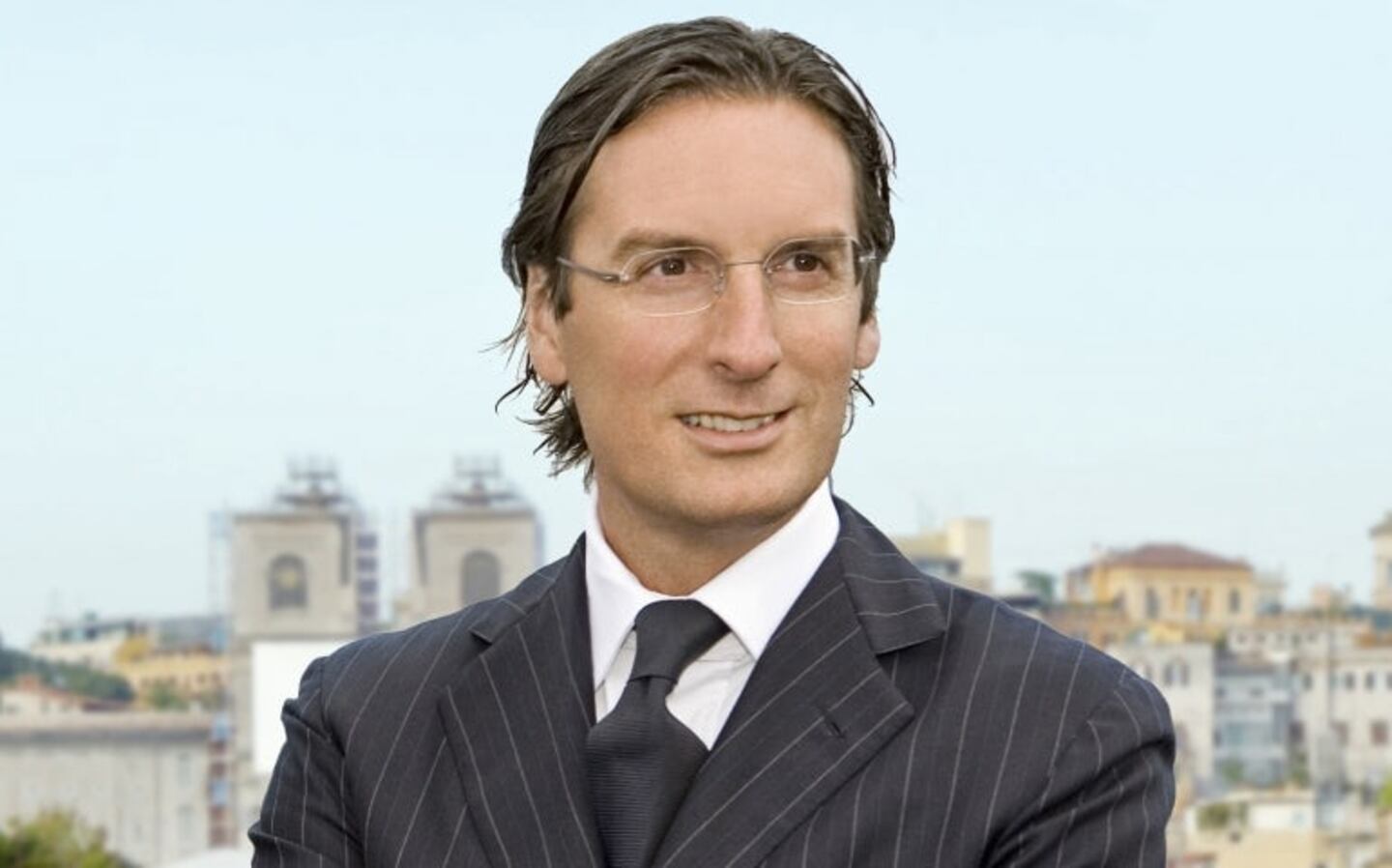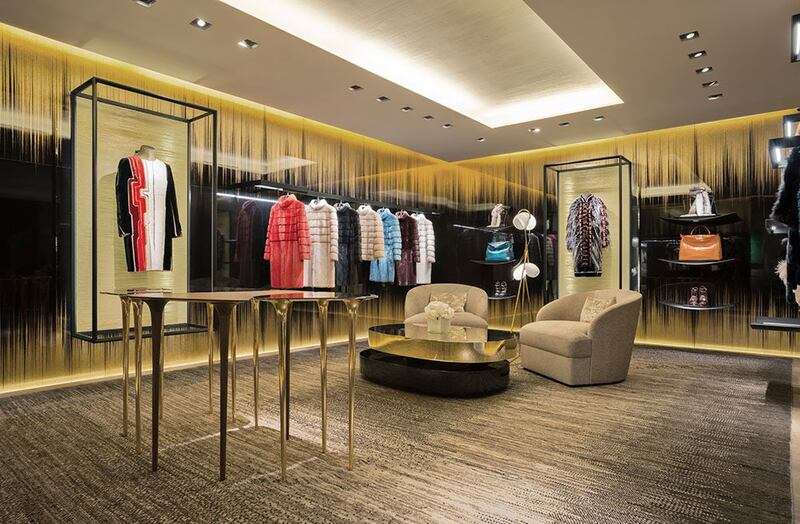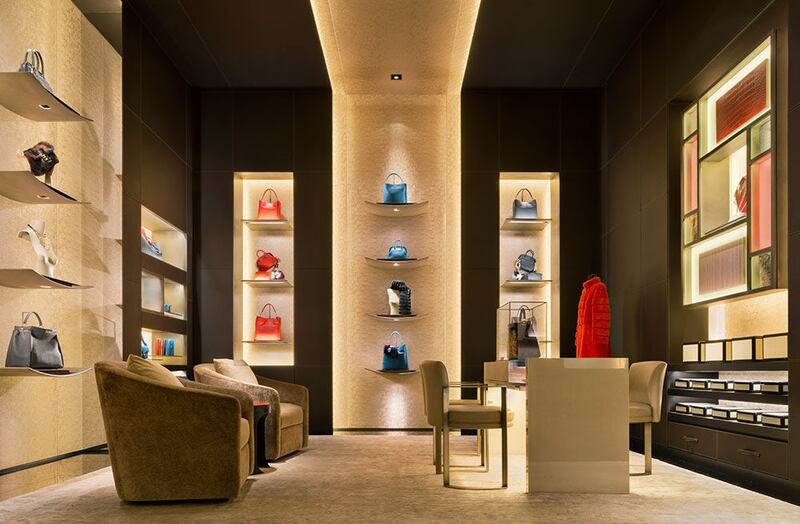
The Business of Fashion
Agenda-setting intelligence, analysis and advice for the global fashion community.

Agenda-setting intelligence, analysis and advice for the global fashion community.

LONDON, United Kingdom — When Pietro Beccari, chief executive of Fendi, sailed into town a few weeks ago to open a brand new 630-square-metre flagship on London's New Bond Street, it was on the back of a successful two-year term at the Roman luxury brand that has reaffirmed his rising status within the LVMH luxury empire as a trusted lieutenant of the group's chairman, Bernard Arnault.
Beccari first joined LVMH in 2006 from the world of consumer packaged goods, following stints at Henkel, the Benckiser Group and Parmalat. He made his name at LVMH as the mastermind behind the multi-pronged global communications strategy at Louis Vuitton, including its memorable, travel-focused “Core Values” campaign, featuring the likes of Muhammed Ali, Michael Gorbachev, Andre Agassi, Catherine Deneuve and Bono.
But when he was appointed CEO of Fendi (taking over from Michael Burke, now chief executive of Louis Vuitton), he was faced with a different kind of challenge altogether. LVMH does not break out sales figures for Fendi, but market reports estimate that the brand turns over more than $1 billion a year. And like Louis Vuitton, Fendi has a rich brand heritage and DNA, known for its extravagant furs and leathers, and its connection with the world of design, underscored by the hand of long-time creative director Karl Lagerfeld. Meanwhile, the continued involvement of Silvia Venturini Fendi provides a direct, familial link to the past. But in an increasingly competitive global luxury market, Fendi's brand awareness had suffered compared to some of its better-known peers. What's more, the company needed to be better connected with younger consumers.
Mr Beccari set about reasserting Fendi's positioning at the heart of Italian culture and heritage, starting with a series of initiatives focused on Rome, including "Fendi for Fountains," a €2.2 million (about $3 million) project focused on restoring the city's historic fountains, including the famous Trevi Fountain, where tourists throw coins over their left shoulders and make wishes.
ADVERTISEMENT
At Fendi’s new London store, surrounded by rails of opulent furs and walls of the brand’s Peekaboo bags, BoF sat down with Mr Beccari to learn how he approached his Fendi challenge, as the brand prepares to celebrate its 90th anniversary in 2015.
BoF: When you first arrived at Fendi in early 2012, what were your observations about the state of the business at that particular moment?
PB: The company was healthy and very well-organised, with a good level of profitability, good people in place and a good mentality.
You know, they told me clearly when I came on board: “Now, you have the keys [to] the car [to drive] the second phase,” which is the phase that we’re trying to carry on right now. We would like to talk more about Fendi, about the brand, capture a younger audience and refine the approach in terms of product and in terms of stores.
I think what sets apart a fashion brand from a luxury brand is history and clients. My observation is that clients are now educated. They read; they go on blogs and the Internet. Everything is very transparent. They approach a brand not just to buy a product. They prepare themselves and they like to buy into a set of values, like a lifestyle. And they also want to hear beautiful stories.
Well at Fendi, I found plenty of beautiful stories to tell. I found a fantastic lifestyle and a taste for beautiful things, which deserves to be told more. That’s what I’m trying to do.
BoF: So, tell me a story then. Imagine I’m a customer that is new to the Fendi brand. Describe to me the key elements of this brand that are important for people to know.
PB: I think luxury is difficult to summarise in only three words of positioning. I was used to doing that when I worked in shampoo and colouration. Complexity is part of the beauty and fascination of luxury. Luxury is complexity; it is richness, it is layers, it is depth.
ADVERTISEMENT
That being said, there was a funny moment at Fendi, in 1965, when the five [Fendi] sisters — in total disagreement with their mother — decided to hire Karl Lagerfeld and to bring a company, which had a fantastic savoir faire, into a new dimension; a transgressive one, a daring one, taking fur and tearing it apart and mixing it with other materials and transforming it into something very daring and very new for the time.
We like to do something recognisable for [its] style, and not only through the logo, which is something you rarely see now in our stores.
BoF: Speaking of the logo, one of the things you’ve done is to add ‘Roma’ back to the logo. In the history of Fendi, Rome is really important for the brand. Was this your decision?
PB: I discussed it with Silvia [Fendi], with Karl [Lagerfeld], but yes, it came from me. Not only did we add ‘Roma’ on, but we made the logo more feminine, more gentle. It’s a logo from the 1950s. There’s a certain roundness to it, without the sharpness of the edges on the letters. It’s a small change, but it’s important for us.
Rome is a city that makes millions of people dream and it's representative of a certain lifestyle. It fascinates people; la dolce vita, la grande bellezza... I think tying our name more and more to the name of Rome is a part of where I like to see the brand, because of the lifestyle it represents, and also because of the beauty that Rome represents. Rome has beauty in every corner and a sense of style that I would like to see back in our clothes and in our creations.
So, it’s a message, it’s a positioning and it’s also a signal I like to give to my teams. The Trevi Fountain, the advertising of our perfume, [and] the launch of our new fragrance will also have Rome as a background.
Then there is also the Palazzo della Civilita Italiana, our new headquarters, which is like a Roman monument to celebrate Italian savoir faire and Italian excellence. It was supposed to be the door to the Expo of 1940 that never took place because of the War. This building has been here since forever, sitting empty, and we were the first ones to go back to it and give it life.
We are a Roman brand and I think we need to occupy the territory and scream it out there.
ADVERTISEMENT
BoF: A brand built on fur and leather presents an interesting challenge. For some people, these are very controversial materials. For certain elements of our very dynamic, diverse society, they represent violations of certain people’s own values. I wonder, when you have pillars of the brand which are like this, how do you navigate them?
PB: I think at the end of the day, everybody at one moment in life can violate the values of others. But when you do that and you do it without committing anything wrong, respecting rules, I think it’s just life. I respect people’s opinions and I hope that people respect my opinion. This is the way I go along with it. I respect rules and people should respect rules too.
BoF: Do you have rules or principles or processes in place for how furs and leathers are sourced?
PB: Definitely. We are certified and we do certifications with all of our suppliers. Seventy percent of the furs are produced in our own atelier, unlike anybody else in the world. We are the only brand who has a fur atelier with more than 670 years of experience. We source our skins, internally with our research and development team. They go to Finland, they go to China, they go to Russia for the auctions. They only go to places which are certified, recognised and who respect the rules. This is something I can sign with my blood, because it is something I really care about.

Fur room in Fendi boutique, London | Source: Courtesy
BoF: The other challenge for a brand that is very much founded on specialised skills is that it’s hard to scale them. There’s nowhere in the world where you can really learn these kinds of skills. How does Fendi as a brand approach the passing on of these kinds of artisanal, craftsmanship skills?
PB: It’s a good question, especially [at] this particular moment in Italy. I feel, although I am part of a French company, a sense of duty as the leader of an Italian brand, which produces every single last detail of these bags and accessories and all other categories in Italy. I don’t know if anybody else can say that.
I feel a moral obligation to defend our Italian patrimony, our savoir faire. So whatever I can do to hire people, to train people and to let young people understand how beautiful it is to learn a métier, to learn an art, I do.
This year we’ve already hired seven people in four months and, last, we hired eight people in our fur atelier. Before becoming an able fur-cutter, you have to spend ten years learning how to cut fur. It is like diamonds. It goes from generation to generation; from family to family. It’s very important for me to hire people, train them and make them [fall in] love with what they do and make them proud of what they do.
I think that the new government in Italy should really give importance to fashion and all these smaller ateliers present in Italy, because they do things that nobody else in the world is able to do. I think we are unique and we are the masters of the world. We should be proud of our luxury industry. I think France is doing a much better job than us at that. And I think it is important that those who can do so much, like people in my position, do something that reinforces the love and the passion for this métier.
BoF: The other pillar product, of course, is bags — and two bags in particular: the Baguette and the Peekaboo. It is said that the Baguette was the fashion industry’s first ‘it’ bag, with waiting lists, et cetera. But then again, it was also the first bag to deal with the fallout of being an ‘it’ bag, in that it also falls out of favour. Can you talk a bit about how you maintain iconic bags as part of your collection, while still keeping them fresh?
PB: There is a third bag that goes back to what from the collection is iconic to me. The bag is the Selleria, born in 1936, with Adele Fendi going to the stables, looking for the stitching of the saddle, like the famous Hermès, and obtained their 'OK' to stitch bags. This kind of punto sellario is one of our characterstics which you see.
I think, as you do, that the "it" bag is a bit passé and now everybody is trying to establish a style, or two or three styles, in their collections, whether it is Céline, Hermès, Dior or Chanel.
Maybe it’s time for a bit of slow luxury. I think it’s important that we, after a period of “bully me,” when everyone wants to produce more, do more, use more, and launch more bags, it’s now time to see how we can make these bags become staples, while at the same time evolving them. In every collection, we like to design a new Baguette, or a new Peekaboo, but still celebrate the shapes, which are [timeless].
Maybe we’ll go back to “bully me” in a while, but for the moment, I think true luxury has a sense of enjoyment and slowness to it. I think we, as Fendi, have the duty, if you want to do business, to exploit these strong characteristics. When I came, I said, “I will not reinvent anything. We are already strong. Let’s try to make ourselves even stronger.”

'Selleria' room in Fendi on Bond Street, London | Source: Courtesy
BoF: We’re here today because you’re opening this new flagship in London. It’s the latest in a series of openings around the world. How has the retail strategy of Fendi come together for you?
PB: We have about 200 stores. We still need to increase the awareness and desirability of the brand, so we’d rather do less openings and closures too, because sometimes there were too many small stores. We will renovate rather than open new stores.
London is an opening, but we will treat this as an exception, because normally we would rather renovate to look better, to look more spacious, to look more luxurious, adding new categories like fur or ready-to-wear. London is a special case because it is a city that is not only important for England, but for the world. Here there are millions of the kinds of clients we would like to recruit from all over the world, from China to India to the Middle East to Europe.
I think New Bond Street is a window and the way you build a store is no longer just to be a store, but to create an image. It’s time spent with the brand. Entering the store is like entering the [website] and navigating ten minutes to discover the history of the brand. If we are doing our job, we should achieve the same objective of getting people acquainted and more knowledgeable about the brand and the product. We will have reached our objective if [people] come into the store with an opinion of the brand, and [leave] with a better opinion.
These are investments not only for retail, but also for the image of the brand.
BoF: There was a time when flagship stores weren’t really about sales, they were about image and brand statements. Today, do you think that brands like Fendi can justify having stores that aren’t profitable in and of their own right?
PB: No, I don’t think so. Nor does Vuitton, nor does Prada. There is always a business aspect to it. This big opening, with this type of investment, you do on [certain streets] like via Montenapoleone in Milan, like Avenue Montaigne in Paris, like New Bond Street, because business is important, right? Not only for Fendi.
That said, [we] could have built a store with less investment and still done business. [We went] that extra mile because [we] wanted to give this image and visibility. If you think about the opening of Vuitton in 2005 on the Champs Élysées, I think that was a defining moment for retail in the modern era. It was a store with dimensions that, at that point, nobody imagined.
I think if you do a good job, then luxury still has a market with a huge potential and if you look at the real estate prices in London, if you look at the millions of people coming to live here because of whatever reason, including fiscal ones, I think then you do want to have one of your best stores on New Bond Street.
Editor's Note: This article was revised on 14 May, 2014. An earlier version of this article misstated that members of the Fendi family retain a small minority stake in the company. They do not. Fendi is wholly owned by LVMH.
This interview has been edited and condensed.
Disclosure: LVMH is part of a consortium of investors which has a minority stake in The Business of Fashion.
From analysis of the global fashion and beauty industries to career and personal advice, BoF’s founder and CEO, Imran Amed, will be answering your questions on Sunday, February 18, 2024 during London Fashion Week.
The State of Fashion 2024 breaks down the 10 themes that will define the industry in the year ahead.
Imran Amed reviews the most important fashion stories of the year and shares his predictions on what this means for the industry in 2024.
After three days of inspiring talks, guests closed out BoF’s gathering for big thinkers with a black tie gala followed by an intimate performance from Rita Ora — guest starring Billy Porter.